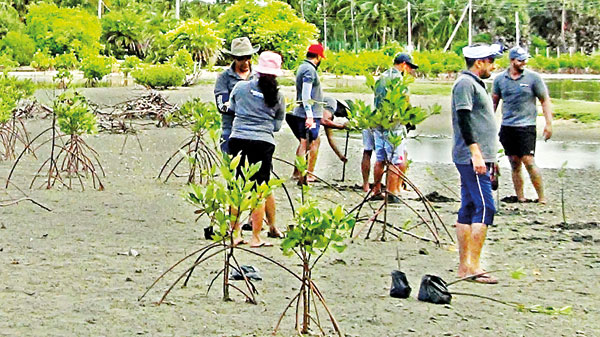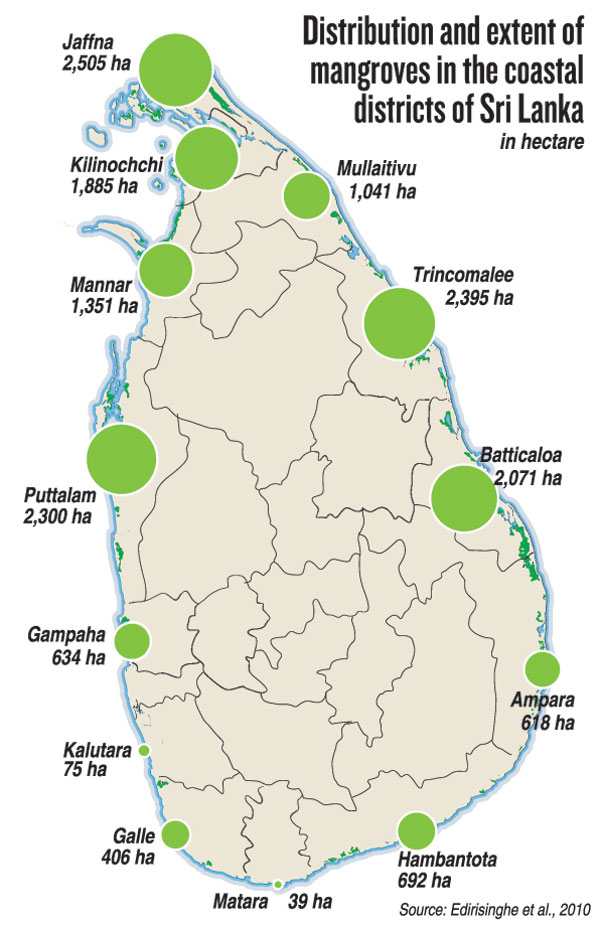News
UN lauds Sri Lanka’s mangrove forestation as example to the world
View(s):By Kasun Warakapitiya
Sri Lanka has earned global recognition for mangrove restoration projects and is to be declared as a United Nations (UN) World Restoration Flagship.
The United Nations General Assembly (UNGA) proclaimed 2021–2030 as the Decade on Ecosystem Restoration. A global effort is on to prevent degradation of ecosystems as well as reverse the damage already done to ecosystems.
Annually, expert groups appointed by the UN, evaluate, select and award the most striking efforts on ecosystem restoration and designate them as flagship initiatives.
This year Sri Lanka has been recognized.
Environment Ministry Secretary Prabath Chandrakeerthi told the Sunday Times that Sri Lanka will receive the recognition on February 27 at the United Nations Environmental Assembly held at Nairobi. Officials of the Department of Wildlife Conservation (DWC), Forest Department, officials of the ministry, other stakeholders as well as non-governmental environmental organisation representatives will attend.
Meanwhile, DWC Director General Chandana Sooriyabandara said that the DWC, the Forestry Department as well as non-governmental organisations carried out mangrove ecosystem restoration programmes.
The DWC focused on restoring mangroves in Anawilundawa in Puttalam where 40 hectares were planted.
A DWC official, who didn’t want to be named, said, that Anavilundawa was earlier used for prawn farming under a Board Of Investment project but was abandoned. The DWC initiated a mangrove restoration programme in the area in 2018.
But, a mob led by the brother of the late state minister Sanath Nishnatha destroyed the area to illegally allow prawn cultivation.
Following the destruction, the DWC fought a legal battle and was supported by non-governmental organisations, environmentalists, experts as well as universities and private companies. The DWC was able to successfully restore the mangrove ecosystem.
The aftermath of the 2004 tsunami and its destructive impact on Sri Lanka’s coastline emphasised the importance of mangroves as a coastal protector. However the continued destruction of mangroves, and the lack of a formal mechanism impeded effective conservation and restoration.

Restoration work on mangroves in Puttalam. Pic by Hiran Priyankara
Sri Lanka began to strengthen coastal ecosystems through expert panels, task forces, policies, action plans and restoration guidelines that represent top-to-bottom and bottom-to-top coalitions for action and conservation.
The approach to mangrove restoration involves science-driven methodologies, with a focus on reviving ecosystem services. This approach focuses on restoring the balance of the entire ecosystem and its connectivity.
The programmes are being carried out with the involvement of youth as researchers along with multiple stakeholder groups covering the Government, NGOs, the private sector, academia and the community.

The best way to say that you found the home of your dreams is by finding it on Hitad.lk. We have listings for apartments for sale or rent in Sri Lanka, no matter what locale you're looking for! Whether you live in Colombo, Galle, Kandy, Matara, Jaffna and more - we've got them all!

